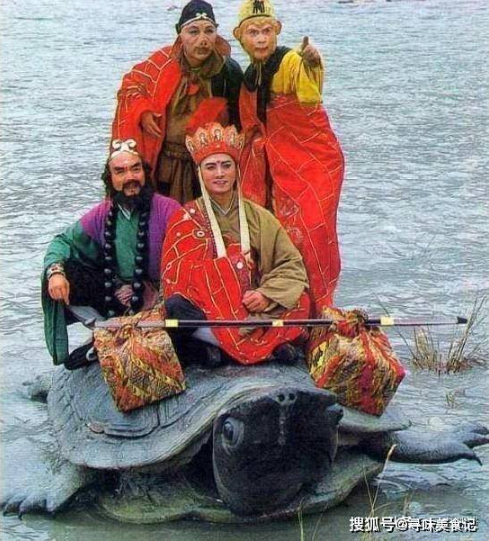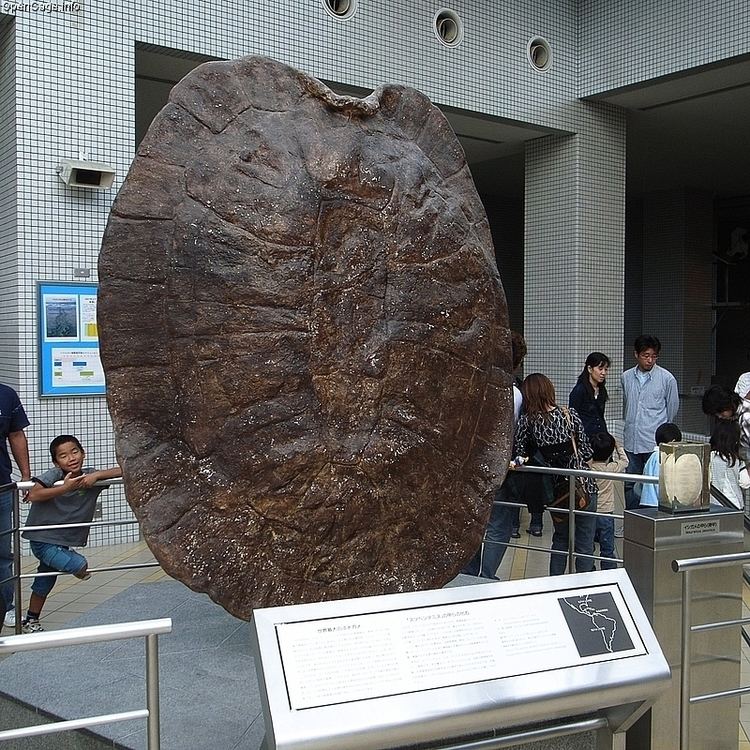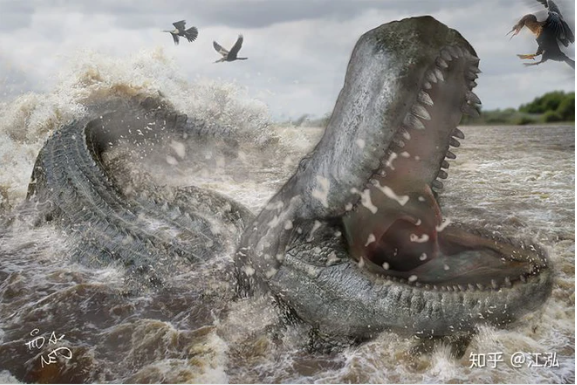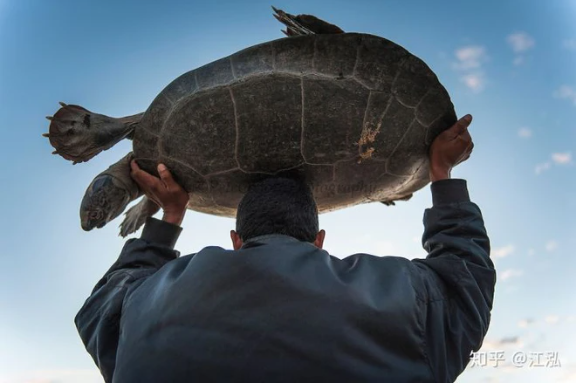In “Journey to the west”, on the way to request sutras, when 4 teachers and students of Duong Tang reached Thong Thien River, because there was no boat to cross the river, they asked a big turtle to carry them. At that time, Old Turtle sent a message that when he went to Tay Thien and met Buddha, remember to ask for him: “I have a question: I have been cultivating for 1,300 years and have not yet transformed into a human being. Even though I can speak and live a long life, I have not escaped this life! Please, please tell Buddha, when will I become a human being?” People”.
When Tripitaka came to request sutras, he forgot about this, so when he returned across the Thong Thien River, he met Old Turtle again and asked Old Turtle to carry him across the river. In the middle of the river, Old Turtle asked Duong Sang whether he would ever ask about his practice or not? Because Tang Tang had forgotten, he remained silent. In the end, all four teachers and students were thrown into the river by an angry Old Turtle. The scriptures were wet and no longer intact. This is the 81st hardship that Tang Tang’s teachers and students had to overcome.

In “Journey to the West”, when the four teachers and students of Tang Tang crossed the Thong Thien River, because there was no boat across the river, they asked a big turtle to carry them. (Photo: Sohu)
Many people are very curious about whether this turtle character is a demon or simply an animal? Most people believe that Ngo Thua An was truly creative when he created a classic work of Chinese literature. Although the turtle in Journey to the West is just a character created by Ngo Thua An, in the world, there has indeed been a species of turtle that can carry many people at the same time on its back.
Super giant turtle
What kind of turtle can be that big? Is it due to a genetic mutation or some other reason? Why do we no longer see the silhouette of this turtle today?

Shell fossil of the turtle Stupendemys geographicus. Photo: Sohu
The super giant turtle we are talking about here is the Ground Turtle with the scientific name Stupendemys geographicus, where Stupendemys means “giant turtle”. Unfortunately, Stupendemys geographicus is now extinct. Stupendemys geographicus is a prehistoric genus of freshwater turtles. Its fossils are found in northern South America, in rocks dating from the Middle Miocene until the beginning of the Pliocene, about 13 to 5 million years ago. This turtle shell fossil is nearly 4 meters long, estimated Its total body length must reach more than 5 meters because it has a very long neck and weighs more than 5 tons. With such size, they can easily carry several people at the same time on their shell.

Compare the giant size of the turtle Stupendemys geographicus with modern turtles and humans. (Photo: Sohu)
The first fossils of this species were found in the 1970s and were named in 1976. Most fossils were found in Brazil, Colombia, Venezuela and several other countries. Scientists found that the turtle Stupendemys geographicus used to live in the northern part of South America.
Judging from the geological layers where fossils were found, this giant turtle often lives in ponds and lakes in tropical rainforests or in slow-flowing rivers. They spend most of their time in water and mainly eat plants.

Most fossils of this turtle are found in South America. (Photo: Sohu)
Then, Venezuelan paleontologist Rodolfo Sánchez and his team found a giant terrestrial turtle shell fossil in Urumac, Venezuela, dating to about 8 million years ago. This fossil specimen is almost the most complete version of the terrestrial turtle. Especially in this fossil record, They found some previously undiscovered features of this turtle’s long horns. However, only male individuals of ground turtles have these long horns. These horns do not grow on the head but on the front of the body and on both sides of the neck. This is also the identifying characteristic of male ground turtles.
Turtles have only one natural enemy
According to paleontologists, the Stupendemys geographicus turtle grew so large in order to defend itself against other predators. And the horns on the shell are also one of their weapons. The turtle Stupendemys geographicus has only one natural enemy Purussaurus crocodile. Purussaurus is an extinct genus of giant caiman that lived in South America during the Miocene epoch, from Colhuehuapian to Montehermosan in the SALMA taxonomy.

The turtle Stupendemys geographicus has only one natural enemy, the crocodile Purussaurus
The reason why scientists concluded so is because on fossil samples of terrestrial turtles, they only found bite marks of the crocodile Purussaurus. Only the bite force of the Purussaurus crocodile can break the extremely sturdy shell of the Stupendemys geographicus turtle.
To date, Stupendemys geographicus is still recognized by scientists as the largest turtle ever found by humans.

The closest relative of the turtle Stupendemys geographicus is the species Podocnemis expansa. (Photo: Sohu)
From fossil samples of the turtle Stupendemys geographicus, archaeologists have found many genetic codes related to many turtle species living in the Amazon today. The closest relative of the turtle Stupendemys geographicus is the species Podocnemis expansa lives in a giant swamp system in South America. Podocnemis species has a body length of about 1 meter and an average weight of about 90 kg.
Source: Sohu, AZ Animals



